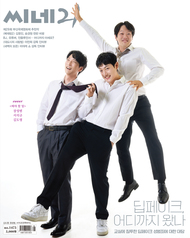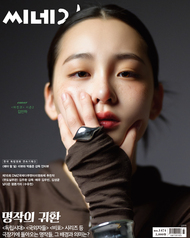올해 회고전에서는 총 9편의 영화가 상영된다. 이 중 <옥중도>와 <여선생> <흑발> 그리고 <흑권>은 우리 나라의 한국영상자료원이 보유하고 있는 프린트이고, 나머지 5편은 홍콩에서 대여한 것인데 그 중 <달기>와 <대폭군> 그리고 <여감방>이 쇼브라더스의, 그리고 <생사결>과 <용호문>이 골든하베스트의 작품이다. 이 회사들의 이름이 낯익은 것은 당연하다. 홍콩 무협영화의 대명사, 장철과 호금전의 터전이 바로 쇼브라더스이고, 70년대부터 홍콩 액션에 새바람을 일으킨 이소룡과 성룡, 그리고 홍콩 느와르의 고향이 바로 골든 하베스트이기 때문이다. 사실 이번에 상영되는 9편 중 6편이 쇼브라더스와, 3편이 골든하베스트와의 합작들로 구성되어 있다. 이번 회고전은 우리를 우리 영화의 과거로만 이끌지 않는다. 우리 합작영화의 과거로 거슬러 올라가다 보면, 우리는 '무협신화'(쇼브라더스로 대표되는)의 세계와 '이소룡 시대'(골든하베스트)와 만나게 되는 것이다.
태권도가 공격할 때
우리 합작영화에서 이 홍콩의 회사들이 갖는 의미는 중요하다. 다른 어떤 나라보다도 많은 영화를 홍콩과 함께 만들었고, 당대 홍콩영화를 대표하던 이들의 전략은 한-홍합작의 방향에 큰 영향을 미쳤기 때문이다. 이들 영화사들의 관계를 좇아 회고전의 영화들을 만나보자.일단 <달기>(1964, 감독 악풍)에서 시작해보자. 신필름과 쇼브라더스와의 합작 1호작인 이 작품은 장대한 스펙타클을 자랑하는 화려한 궁중사극이다. 또 다른 상영작인 <대폭군>(1966, 감독 임원식)과 더불어 이 두 영화사는 4편의 초대형 궁중사극을 공동 제작하였다(이들은 총 7편의 영화를 함께 만들었다).
<달기>를 대형스크린에서 만나는 것은 가슴 뛰는 일이다. 말로만 전해지던 전설 속의 영화를 드디어 만나는 것이기 때문이다. 눈앞에 펼쳐지는 스펙터클은 지금 봐도 손색이 없는 장대함을 과시한다. 하지만 이 스펙터클이 쇼브라더스가 제공했던 물량에 있다고 생각한다면 큰 오해다. <달기>와 <대폭군>은 영화를 멋지게 만드는 재주는 물량에 있지 않고 재능에 있는 것이라는 것을 증명하고 있다. 가령, <달기>의 전투장면은 고작 1200명의 엑스트라를 동원하여 제작되었다. 당시로는 최대동원숫자였지만 사막과 같은 벌판에 1200명을 풀어놓아봤자 어설퍼 보이기 쉽기 때문이다. 이 영화들의 스펙터클이 놀라운 것은 이 지점이다. 천명을 어떻게 십 만 대군처럼 보이게 만드느냐하는 것은 결국 영화적 재능의 문제이기 때문이다.
60년대와 70년대 중반까지가 쇼브라더스와의 합작이 핵을 이루었다면 그 이후는 골든하베스트와의 합작이 핵을 이룬다. <흑권>(1976, 감독 황풍)은 언젠가 쿠엔틴 타란티노가 자신있게 한국감독이라고 주장했던 중국감독 황풍이 연출한 작품이다. 그의 오해를 탓할 수 없는 것이 수많은 합작영화 중 가장 '한국적'인 것이 바로 <흑권>이기 때문이다. 영화사의 미래를 안고 있던 이소룡의 갑작스런 죽음 이후, 골든하베스트의 처절한 제2의 이소룡 찾기 여정에서 발견된 유명한 태권도 사범 이준구(그가 요사이 어떤 강장제 광고에 등장한 것을 보고 깜짝 놀랐다!)가 주연을 맡았고 영어제목 역시 '태권도가 공격할 때 When Taekwondo Strikes'이고 보면 당연한 오해일 것이다. 황풍은 아마 가장 많은 그리고 다양한 형식의 한홍합작영화에 참여한 홍콩감독 중 하나일 것이다. 그는 조리되지 않은 액션을 선보인다. 거칠고 투박한 액션 속에 힘을 싣는다. 바로 이점이 화려한 쿵푸보다 강인한 태권도를 돋보이게 하는 지점일 것이다.
관객들이 사랑했던 영화
70년대 합작영화는 아주 자주 '저질 폭력 영화'와 '국적불명' 시비에 시달려야 했다. 이걸 탓할수만은 없다. 이번 상영작 중 <여선생>과 <흑권>을 제외하고 나면 모두 '중국영화'라고 해도 아무 문제가 없는 중국이야기와 중국 신화를 이야기하고 있지 않은가? 하지만 '저질 폭력'은 한번쯤 생각해 볼 문제다. 어쩌면 이 시시비비는 실제 영화적 가치와는 상관없이 이루어졌을 수 있다. 이번 회고전을 준비하며 읽은 한 신문기사는 이번 상영작 중에 하나인 <용호문>을 '저속한 폭력영화'로 지목하고 있다. <용호문>은 그리 저속하지도 그리 폭력적이지도 않다. 이것은 이 영화가 오우삼의 것이기 때문이 아니라, 잘 만든 무협장르영화이기 때문이다. 이 시기의 많은 합작영화들은 '합작영화'이기에 폄하되었고, 이후에도 이들의 명예는 복원되지 않았다. 예나 지금이나 이들 영화를 지켜준 것은 관객들이다. 관객들은 이 영화를 좋아했다. 가령 이번 상영작인 <여감방>은 개봉하던 해 10만 관객을 끌어 모으면 흥행 10위안에 들었던 작품이다.70년대 한국영화계는 암흑기였다. 산업적인 침체기 속에 사회의 암울함을 이야기하는 호스테스 영화가 중심으로 떠올랐고, 이 틈에서 액션영화가 변두리의 재개봉관과 비방극장을 중심으로 흥행을 주도하고 있었다. 합작영화는 이 시기 액션영화와 홍콩무협영화, 그리고 에로틱한 영화들에 대한 관객의 욕구에 화답하는 영화였다.
우리는 기본적으로 제작 중심의 영화사에 익숙하다. 그것을 정당한 것으로 여겨왔다. 70년대 홍콩영화의 소비시장으로 전락한 듯 보이는 합작영화가 못마땅한 이유도 여기에 있다. 하지만 영화역사의 절반은 관객의 역사이다. 만드는 이와 보는 이는 불가분의 관계에 있기 때문이다. 합작영화는 우리로 하여금 영화사를 새로운 관점으로 볼 것을 촉구한다. 만들지 못했던 상황과 소비를 거절하지 못했던 상황을 설명할 것을 요구하고 있는 것이다. 이번 회고전은 그 시작 지점에 서있다.
조영정 (한국영화회고전 프로그램 코디네이터)
In this year's Korean Cinema Retrospective, 9 films are put on the screen. Among these films, we currently retain and at the Korean Federation of Film Archives, and 5 films of them are from Hong Kong. and are produced by Shaw Brothers, and and are directed by Golden Harvest film production. Chang Cheh and King Hu represented of Shaw Brothers, and Golden Harvest started with Bruce Lee who had given the new trend of Hong Kong action films. In fact, 6 out of 9 films are jointed by Shaw Brothers and 3 are with Golden Harvest. In this Korean Cinema Retrospective, we tried to go back to our past co-product films. This will provide us moments of reaching the mythology of martial art and the time of Bruce Lee.
Hong Kong film production companies seem to take an important role in our joint-product films because we have already made a lot of films with Hong Kong. (1964, Yueh Feng) is the first joint-product film of Sheen Film and Shaw Brothers which is famous for the spectacular historical drama of the Chinese Royal Court. It would be an extreme pleasure to meet the legendary film on a big screen. However, it sure is wrong to think that their impact on the film industry is so much dependent on the material superiority. and already proved that how to make better films is not based on the materiality but the real ability. For instance, the battle scene of is taken with only 1200 extra actors and actresses. It was the maximum number possible at that time, but it still could be chosen as a sloppy scene. However, this film shows the potential ability on how to make these 1200 people to be seen as real one million soldiers.
The film cooperation was mainly managed with Shaw Brothers until 60's and 70's, and later with Golden Harvest. (1976) produced by Huang Feng was very much 'Koreanized'. After the death of Bruce Lee, Golden Harvest's been quite keen on finding the 2nd Bruce Lee, and they finally found Lee Joon-gu, a famous master of Taekwondo as a main character of . Huang Feng is probably one of the most participated Hong Kong directors in the joint-production film project. He expressed powers in the tough and untamed actions in his film and this speciality might help his film look better. On other hand, the co-production films are often afflicted with its confused nationality and salty and violence films. The violence in the films should be deeply considered. According to a newspaper, it pointed out that contains very much violence. However, these films contain more or less violence, but it well shows the characteristics of the martial arts genre films. Still, most of these films are low graded because they are the co-product films. Above all, how these movies are maintained their popularity is because of audiences. People like these kind of films.
Korean film industry met the dark age in 70's. Due to the economic depression, so-called 'Hostess films' were issued, and action films were mainly appealed with audience. At that time, the joint-product films were the answer for the audiences' growing need of action, martial arts and erotic films.We are basically familiar with the production-base film companies. However, the half of the film history is made with audiences because they are in inseparable relation. The joint-product films help us view film companies in different perspectives. This film retrospective starts to explain our past filmmaking circumstances.





